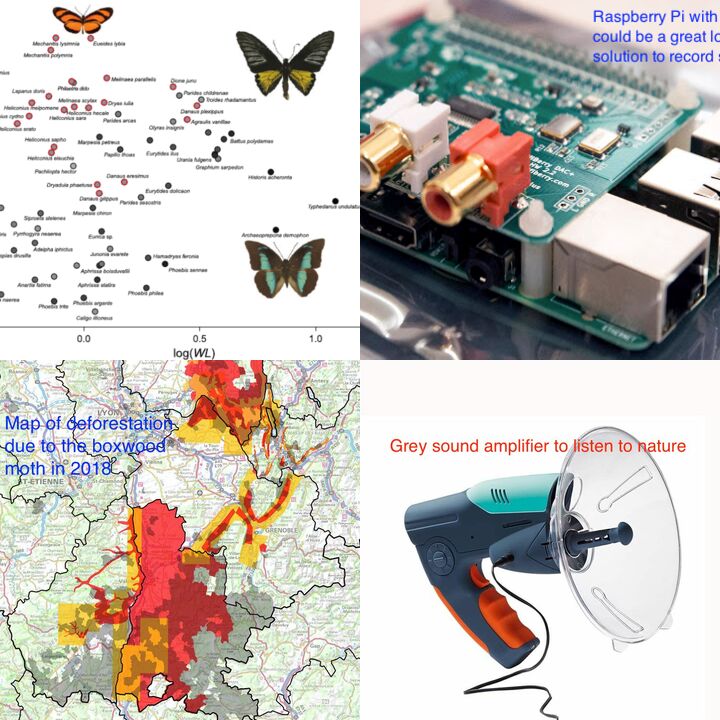Moths listener to save plants
The Problem
There are many moths and butterflies responsible for heavy plant destruction. They often have the particularity of appreciating a specific type of plant like grapevine moth or boxwood moth. When they appear on a new territory with food, they will be able to multiply at an incredible speed until they have destroyed all traces of plants. If we are notified in time, we can intervene with nets to protect the plantation. But we must be able to react extremely quickly because the situation is getting out of hand very quickly.
Our Proposal
Although most of these moths or butterflies look alike, they all have small physical differences. All these characteristics are listed in databases that should allow us to make hypotheses about audio behaviour recordings. Would we then be able to differentiate them using digital sensors such as microphone or video? If so, we could counter an invasion as soon as it appears rather than lose time that will make the invasion uncontrollable until all the plants are gone... The idea of this project is therefore to compare butterfly and moths audio recordings according to their real characteristics. With the right recognition algorithm, it may then be possible to attach microphones to exposed plants and detect the arrival of harmful moths.
We Assume that...
we will be able to detect and isolate these different sounds so that they can be digitally recognised.
Moths can be obtained to make audio recordings
We can get a microphone focused on the frequencies we are interested in
Constraints to Overcome
The first part will be to test different audio recordings of butterflies and then try to record details (sound power, frequency of a wing flapping, amplitude...).
Current Work
1. Get as many butterfly recordings as possible 2. Identify software to compare audio sequences 3. Compare physiological databases of these animals to allow us to identify our needs in terms of similarity according to certain characteristics 4. Design a listening circuit to focus on the audio frequencies of interest to us
Current Needs
1. Obtain specific audio recording equipment 2. Get the moths we are interested in 3. Make as many recordings as possible and compare them. Check whether distinctions can be made
